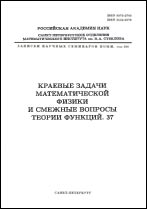|
|
Zapiski Nauchnykh Seminarov POMI, 2023, Volume 529, Pages 157–175
(Mi znsl7425)
|
 |
|
 |
What do text-to-image models know about the languages of the world?
V. Firsanova
St. Petersburg State University, St. Petersburg, Russia
Key words and phrases:
explainable artificial intelligence, text-to-image synthesis, diffusion models.
Received: 06.09.2023
Citation:
V. Firsanova, “What do text-to-image models know about the languages of the world?”, Investigations on applied mathematics and informatics. Part II–1, Zap. Nauchn. Sem. POMI, 529, POMI, St. Petersburg, 2023, 157–175
Linking options:
https://www.mathnet.ru/eng/znsl7425 https://www.mathnet.ru/eng/znsl/v529/p157
|

| Statistics & downloads: |
| Abstract page: | 124 | | Full-text PDF : | 61 | | References: | 16 |
|




 Contact us:
Contact us: Terms of Use
Terms of Use
 Registration to the website
Registration to the website Logotypes
Logotypes








 Citation in format
Citation in format 